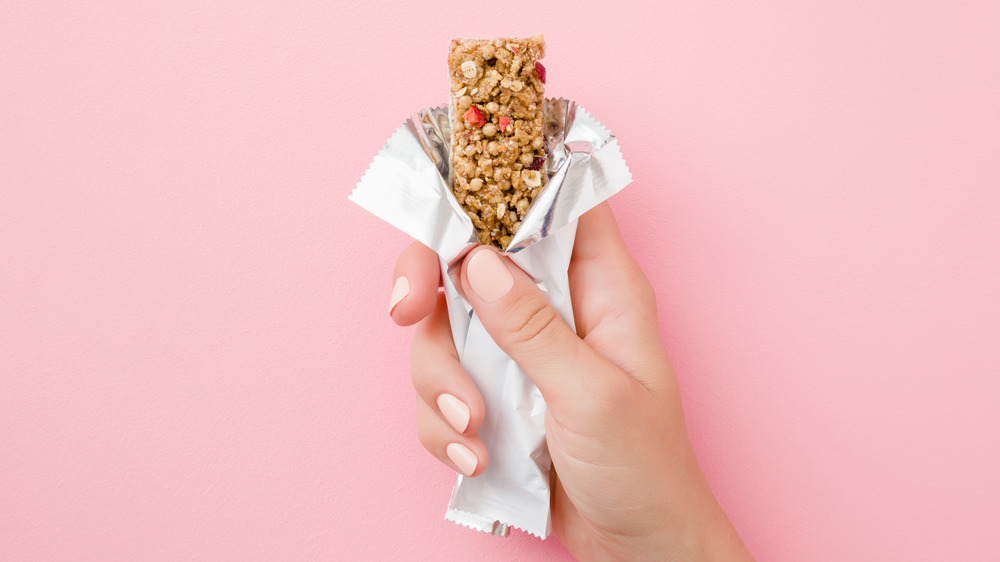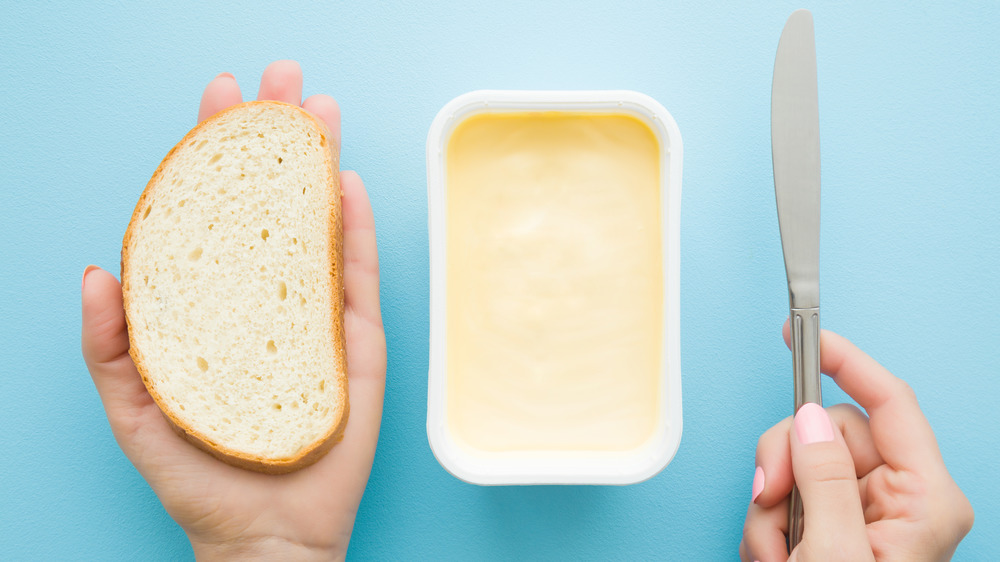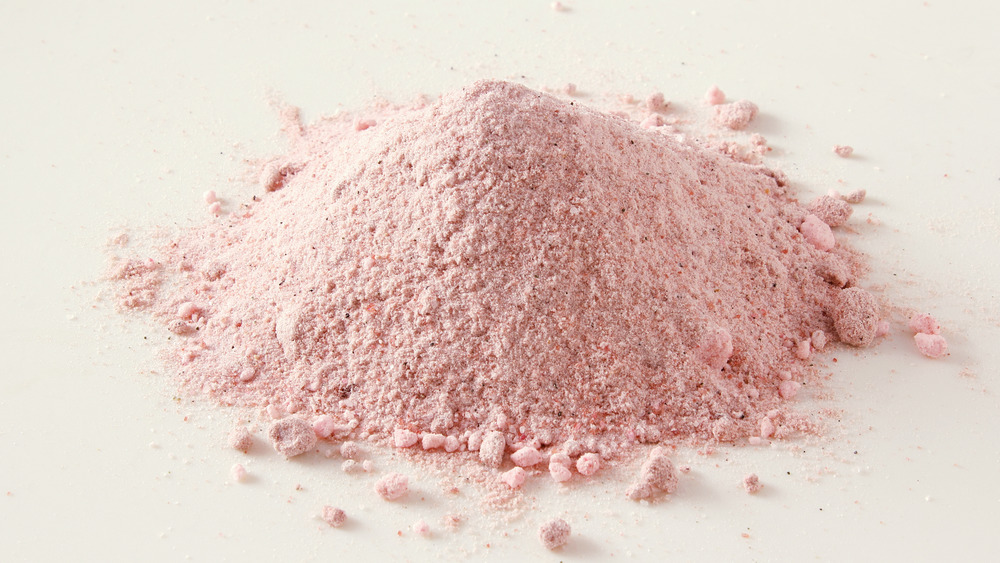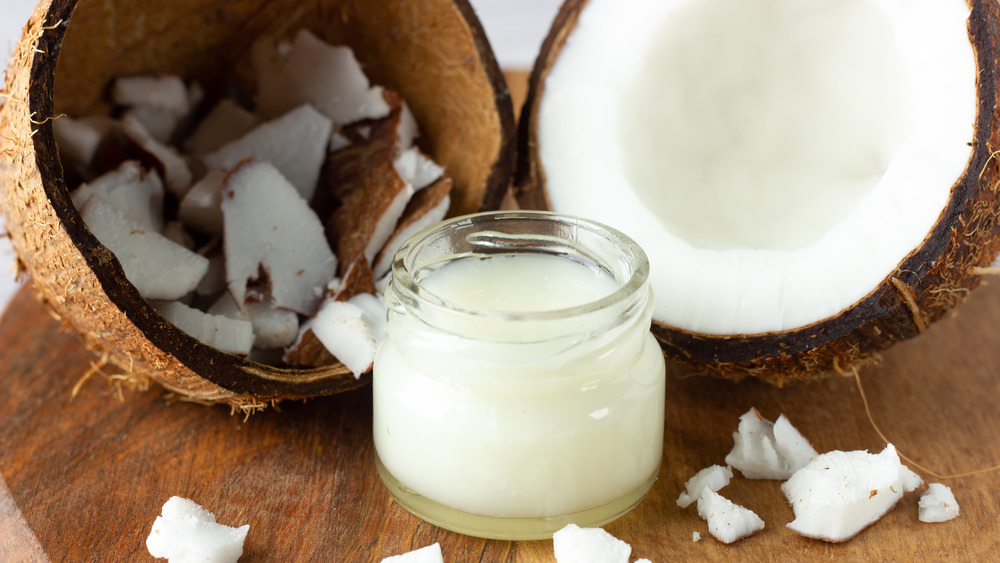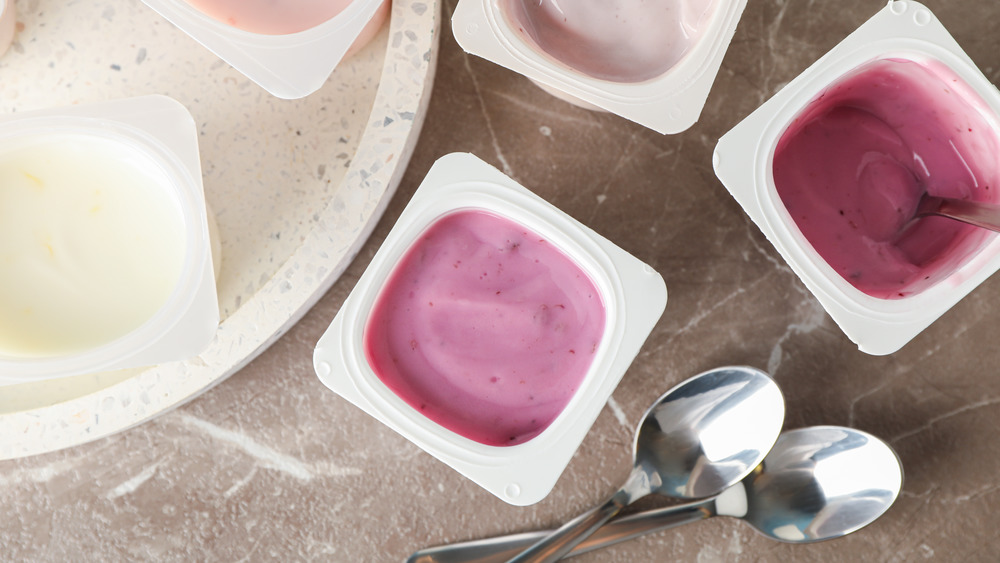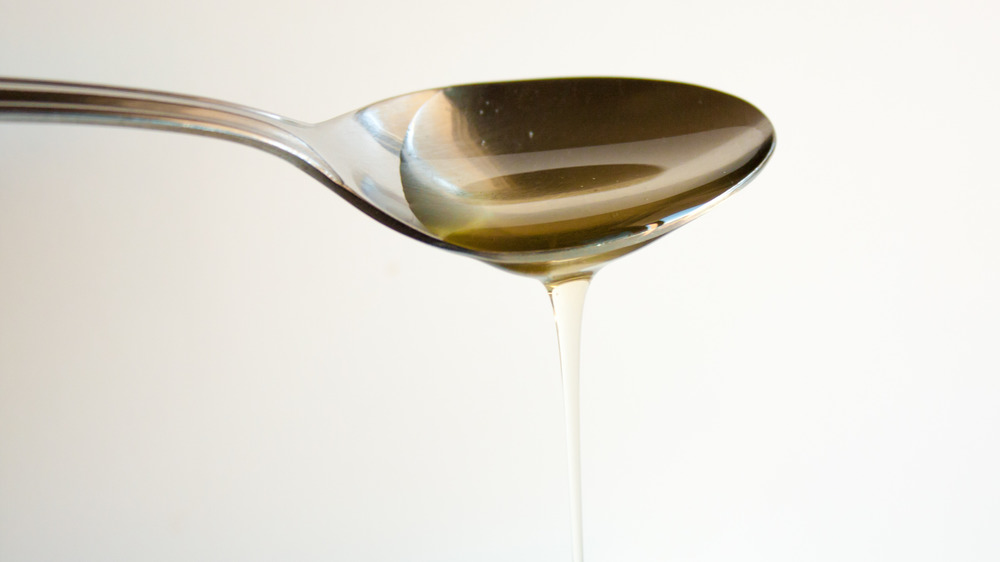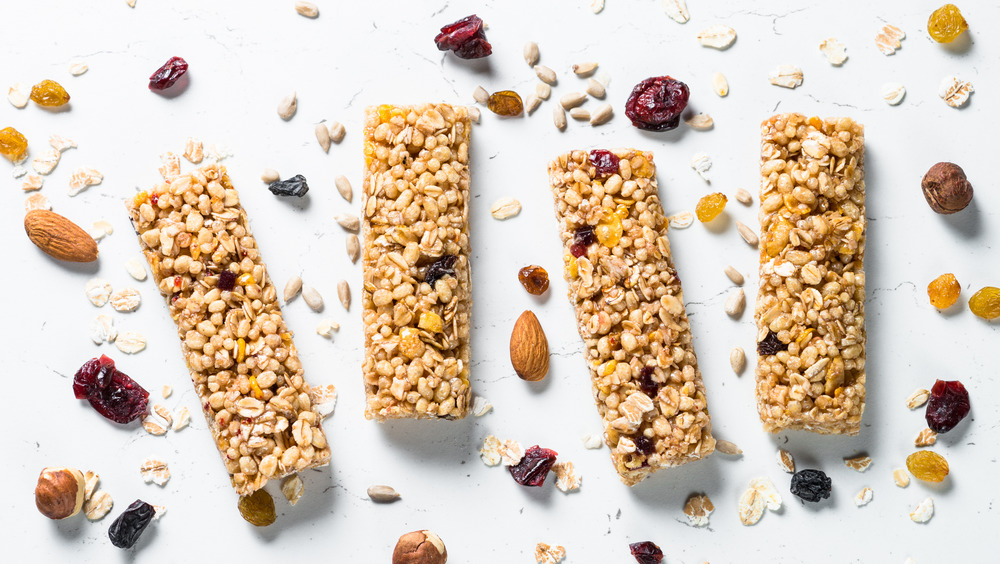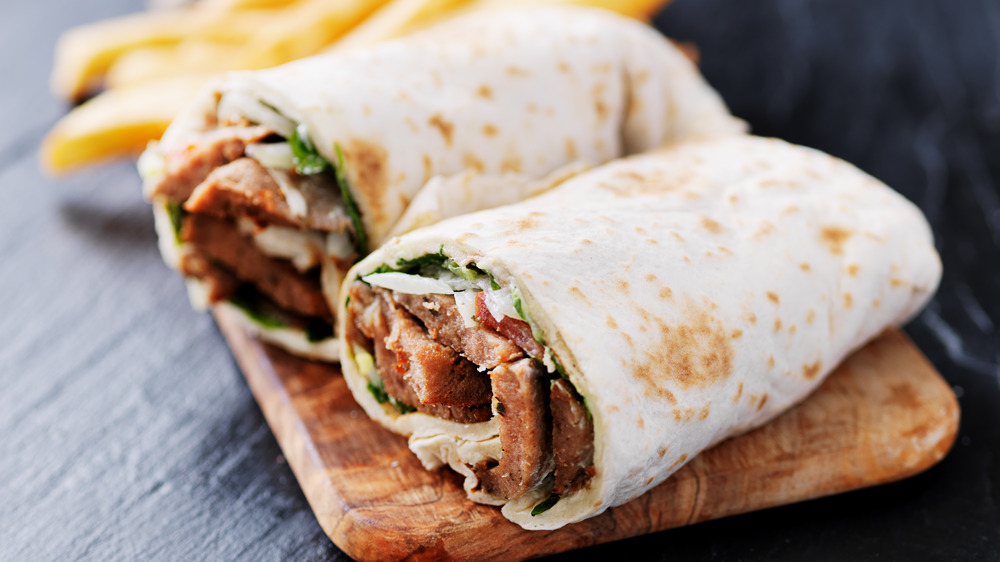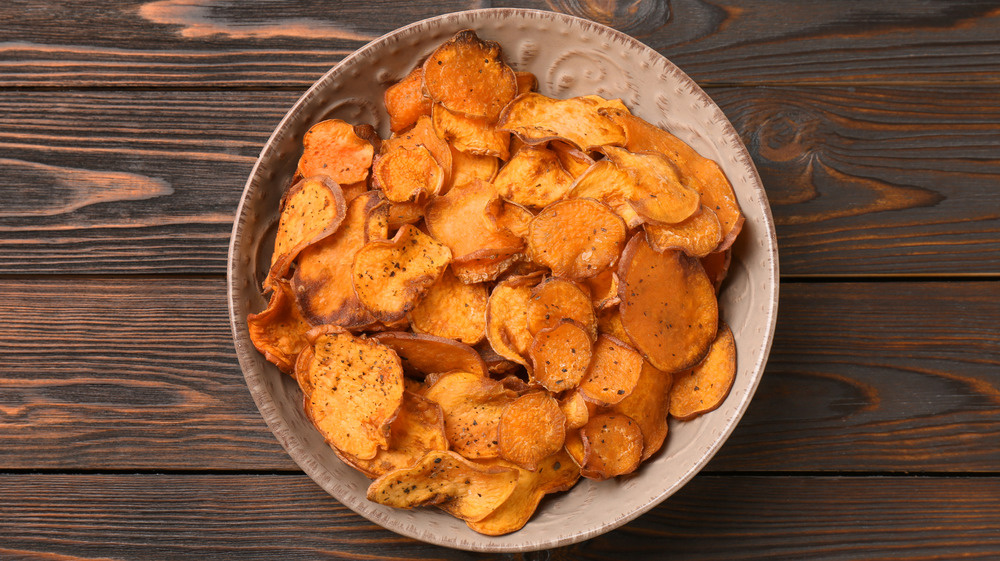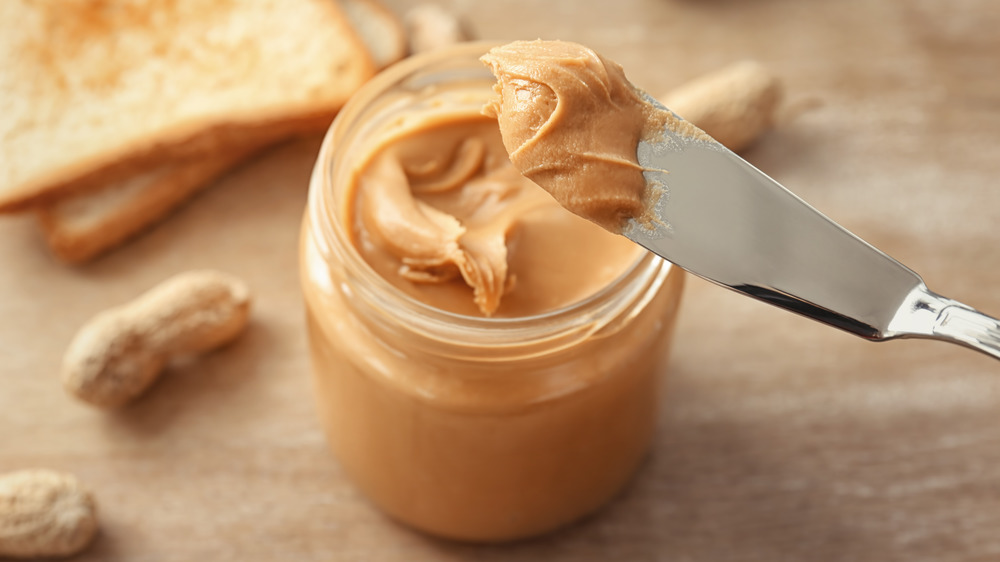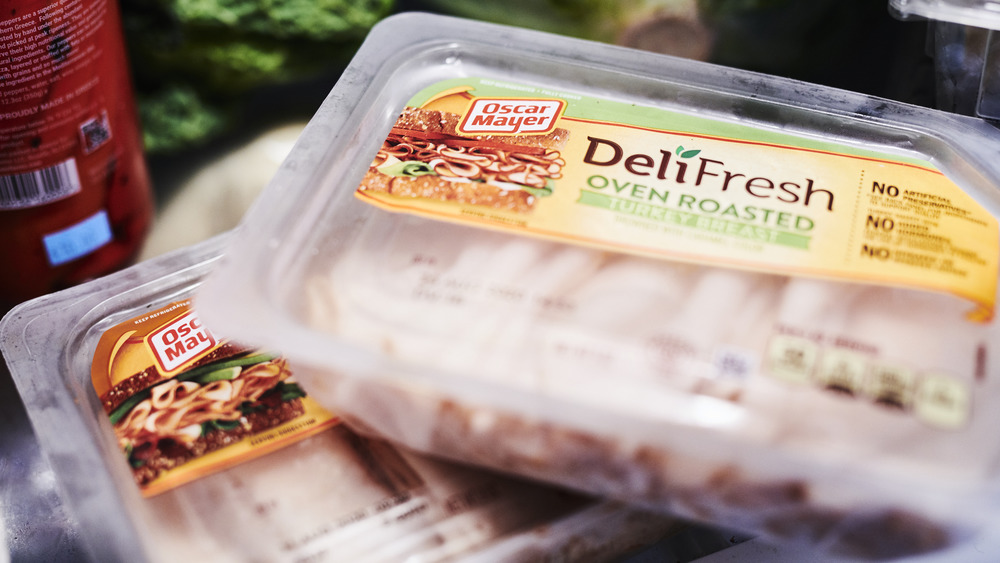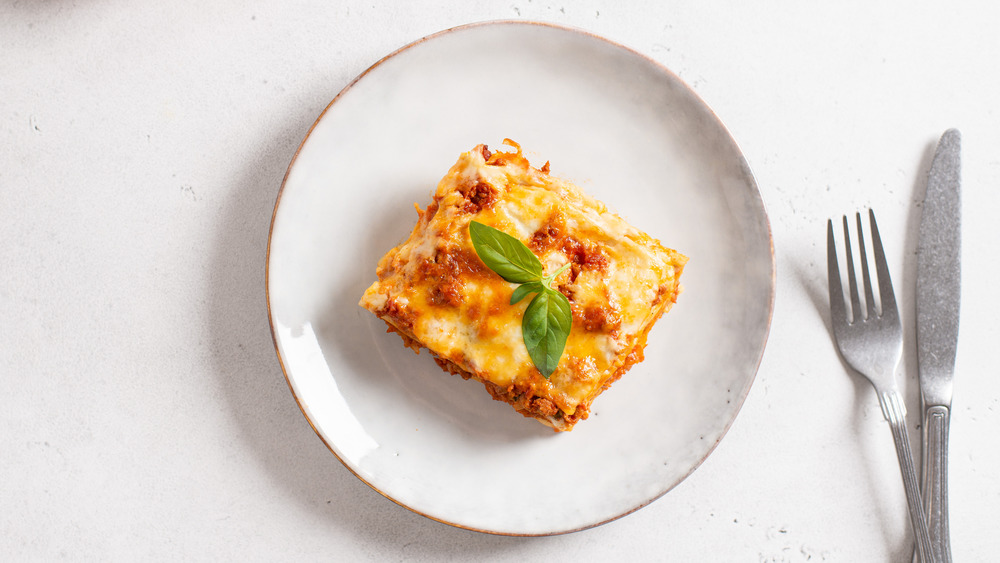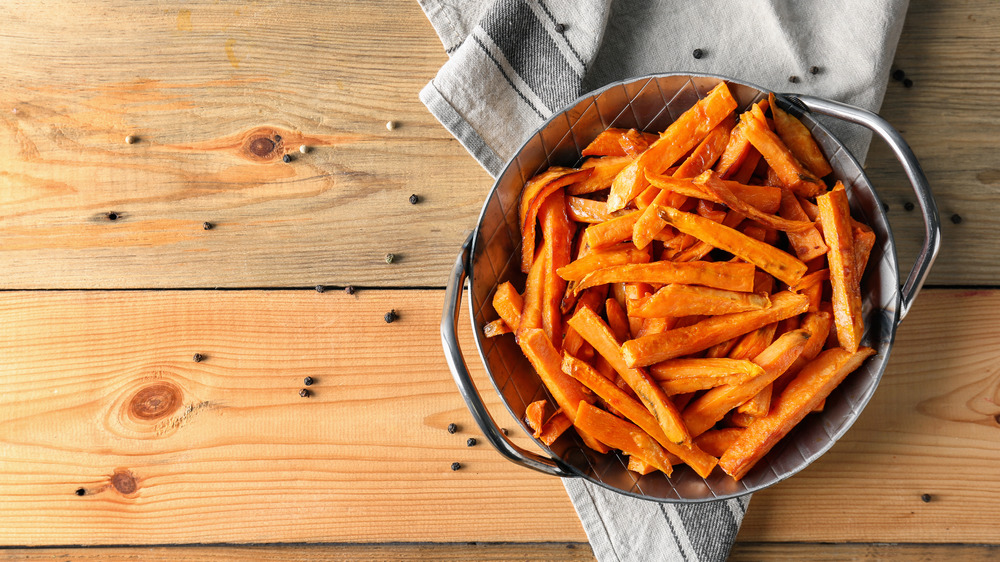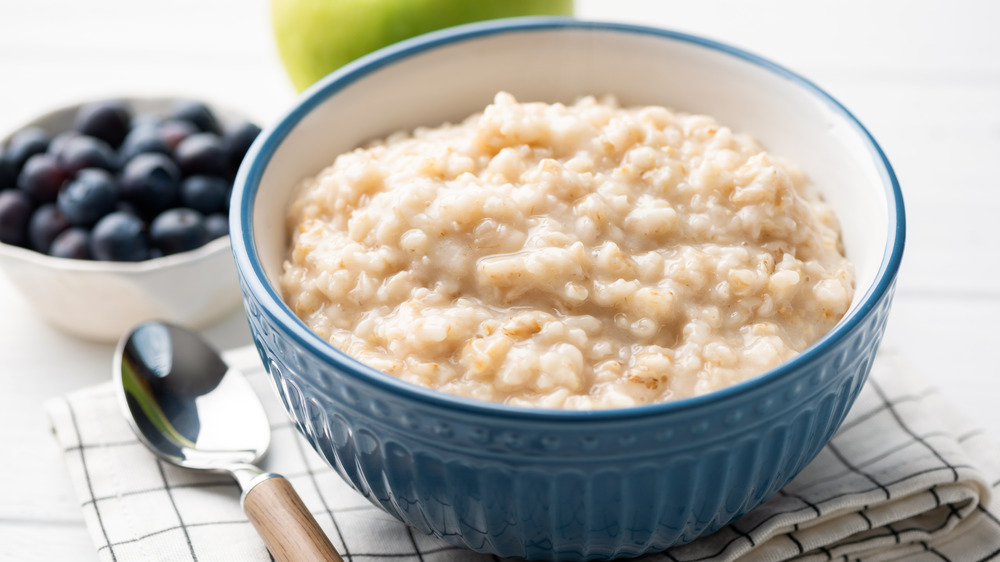Foods You Probably Thought Were Healthy But Actually Aren't
Eating healthy isn't always black and white — there is a lot of gray area. With all of the conflicting nutrition advice that gets tossed around, it's no wonder things can get confusing. Not to mention marketing jargon such as "all natural" or "low fat" that makes it easy to believe something is healthy when the ingredient list says otherwise. Sometimes these kinds of foods can actually lead to unintentional weight gain or have a hand in chronic disease development.
So first, what constitutes "eating healthy"? The U.S. Department of Health and Human Services states that eating healthy essentially means you're choosing various nutritious foods and drinks. This includes foods such as fruits, vegetables, whole grains, and lean protein, while limiting certain foods that contain high amounts of salt, sugar, saturated fat, and refined grains. We've compiled some of the trickiest foods that can easily fool us into thinking they're healthy.
Margarine isn't a healthier alternative to butter
Butter has always gotten a bad rap due to its high saturated fat content, leading to problems such as increased heart disease risk. With that, margarine became an increasingly popular substitution (via The Atlantic). Margarine is a combination of water and vegetable oil such as soybean, corn, palm, canola, or olive oil. To match the solid state of butter, scientists used a process called hydrogenation, which resulted in one of the worst fats you can consume: trans fat. As a 2015 study in BMJ revealed, trans fats are associated with increased chronic disease risk and all-cause death.
Back in 2015, the U.S. Food and Drug Administration banned trans fats in processed foods, but margarine still exists. Some producers started using a technique called interesterification to harden the margarine by replacing some of the unsaturated fat with saturated fat. Since this process is fairly new, there is limited research to understand the long-term health effects it may hold. Instead of dealing with the uncertain, Harvard's Healthbeat recommends swapping out butter and margarine for olive oil or other oils that are high in healthy mono- and polyunsaturated fats — aka healthy fats.
Pink Himalayan salt doesn't live up to the hype
Likely thanks to the internet, there's a belief that pretty pink salt crystals are much better for us than that plain ole table salt. Claims such as pink Himalayan salt being "cleaner" and more nutritious than regular salt have made their rounds online — and this belief continues to linger. Spoiler alert: It's a myth.
"Himalayan salt does contain trace amounts of minerals like potassium, magnesium, iron, and more, but the amounts are insignificant and afford no additional health benefits," Jeff McGrath, a clinical dietitian at Westchester Medical Center in New York, told Vice. Plus, if you eat a balanced diet, you're probably already getting all the minerals you need, McGrath added.
It's also important to note that pink Himalayan salt usually doesn't contain iodine, which is an essential nutrient and available in iodized salt. "Iodine's main function is as an important component of thyroid hormones," Catherine Brennan, registered dietitian, told Vice. "Persons deficient in iodine cannot make enough thyroid hormone, which can lead to hypothyroidism, or even enlargement of the thyroid — known as goiter." All in all, salt should be eaten in moderation regardless of what it looks like or where it comes from.
Coconut oil doesn't hold a candle to some other oils
Olive oil was pushed aside when effective marketing strategies made coconut oil seem like a shiny new toy. Coconut oil was believed to benefit individuals in a variety of ways, including boosting metabolism (via The Washington Post). An article published in Circulation explained that coconut oil significantly increases LDL cholesterol ("bad" cholesterol) and HDL cholesterol ("good" cholesterol). High LDL cholesterol can begin to form plaque which build up in your arteries. HDL, on the other hand, is more beneficial when levels are high because it can remove other cholesterol from the bloodstream (via Healthline). That doesn't automatically place coconut oil in the "healthy" category though.
"We don't really know how coconut oil affects heart disease," physician Walter Willett wrote in an article for Harvard Health Letter. "And I don't think coconut oil is as healthful as vegetable oils like olive oil and soybean oil, which are mainly unsaturated fat and therefore both lower LDL and increase HDL." This is in line with a 2018 report in Current Nutrition Reports, which stated that until the long-term effects on heart health become clearer, we should be treating coconut oil as a saturated fat. And "its consumption should not exceed the USDA's daily recommendation (less than 10% of total calorie intake)," the report continued.
Flavored yogurt contains a ton of sugar
Before you panic, yogurt itself isn't bad for you. It's actually what's added to yogurt that can make a healthy food turn unhealthy. When you're browsing the dairy aisle, you're basically going to want to nix all yogurt varieties that have some type of flavor added — yes, even those "fruit on the bottom" varieties. Often times these flavors can push the sugar content past the daily recommended amount, which is 25 grams for women and 36 grams for men. "Plain, nonfat yogurt is best," registered dietitian Julia Zumpano told the Cleveland Clinic. "Both original and Greek-style are excellent sources of protein, calcium and probiotics."
Your heart will be happy once you pass on those sugar-filled yogurts. An article published in Open Heart highlighted how diets high in sugar can increase the prevalence of diabetes. With this increase also comes a higher chance of coronary heart disease, which is responsible for about 17 percent of deaths in the United States.
Agave nectar isn't necessarily a good replacement for table sugar
Agave nectar has been named a "natural sweetener" that makes consumers turn to it in place of sugar. One of the reasons it's marketed as "healthy" or even "diabetes friendly" is due to it seemingly being low on the glycemic index compared to table sugar (via Healthline). According to the Mayo Clinic, the glycemic index is a measure of how specific foods can affect your blood sugar levels. Eating foods that are lower on the glycemic index are less likely to make your blood sugar spike drastically and may prevent health complications.
This might sound good, but here's the kicker: Agave nectar is still made up of about 84 percent fructose (a type of sugar), a report in the Journal of Agricultural and Food Chemistry explained. This can pose a problem since our liver is the only organ that is able to metabolize fructose (via Healthline). If too much fructose is consumed, it can create issues with our metabolic health and possibly be linked to insulin resistance, metabolic syndrome, heart disease, and type 2 diabetes according to a study in Current Opinion in Lipidology.
Granola bars often contain unhealthy ingredients
One of the most convenient snack foods is also often riddled with added sugar, calories, and other artificial ingredients. Too much sugar is linked with diabetes and coronary heart disease, as an article published in Open Heart revealed. Some manufacturers have tried to find a way around sugar, using artificial sweeteners or sugar alcohols, such as xylitol or sorbitol, instead. But those come with their own issues.
According to a report in International Journal of Dentistry, sugar alcohols are not fully digested by our body and can create digestive issues. Artificial sweeteners may also disrupt healthy gut bacteria, leading to unwanted stomach problems (via Scientific American).
This doesn't mean that all granola bars are bad, but you'll need to check out the ingredient list to be sure you're grabbing a quality product. "If there's a bar and the ingredients are dates, almonds, chia seeds, coconut and granola, you are getting nutrition and fiber without added sugar," Andy Bellatti, registered dietitian, told Time. Another registered dietitian, Erin Palinski-Wade, also told Time to use the "rule of 5" when picking out a granola bar. This means finding a bar that contains 5 grams of fiber, 5 grams of protein, and 5 grams of unsaturated fat.
Fruit juices can't compete with whole fruits
If it comes from a fruit it has to be healthy, right? Unfortunately, no. "You do lose fiber in fruit and vegetable juices, and that results in juices having the ability to spike your blood sugar in a more dramatic way than if you ate the actual fruit or vegetable," Robin Foroutan, integrative medicine dietitian, told CNN Health. The loss of fiber from juicing can also take away beneficial antioxidants, according to a 2010 study published in Molecular Nutrition & Food Research. Without these important components, you're not going to get the same health benefits from, say, orange juice as you would had you ate the whole orange.
Similarly, one study published in the European Journal of Nutrition found that drinking clear apple juice increased LDL ("bad") cholesterol levels by 6.9 percent compared to eating whole apples. It's believed that the fiber content in whole apples is what helps to keep cholesterol low (via Verywell Health).
Wraps can have more calories than sandwiches
If you love bread and have been opting for wraps instead to be healthier, well, you can stop now. "People think wraps are better for you because the bread is flat and unleavened," Gabrielle Maston, dietitian and exercise physiologist, told the Daily Mail. "But in terms of energy one wrap is the same as two slices of bread which means they're not any better for you." Many wraps also often contain hydrogenated oil (trans fats) and higher amounts of sodium compared to bread (via GQ).
It's not only the wrap, but what's being put in the wrap, as it can hold much more than a slice of bread. "When I'm at cafes, I see a lot of wraps available where the surface area is the size of a Frisbee. Too big," Lori Zanini, registered dietitian, told GQ. "The larger the wrap, the more ingredients tend to get stuffed in them." This means not only do you get additional calories and carbs from the wrap, but once your wrap is stuffed, you may wind up with double the calories than you would've with your standard sandwich.
Veggie chips are pretty much just potato chips
You see the word "veggie" or "vegetable" labeled on a snack that is normally deemed unhealthy and it automatically seems like a good alternative. Although you may think eating veggie chips are simply a way to eat a yummy snack while upping your vegetable intake, that's not really what's happening, Cara Harbstreet, registered dietitian of Smart Street Nutrition told Self. She went on to add, "Foods that carry the health halo don't necessarily translate into foods that are nutritionally superior, as is the case with veggie chips versus regular potato chips."
When comparing vegetable chips and regular potato chips, there is not much of a difference. Your classic potato chip is typically made with potatoes, vegetable oil, and salt. Vegetable chips may use different root vegetables as their base (such as sweet potatoes or parsnips) but also use vegetable oil and salt. These similar ingredients mean the nutrition facts look about the same. "Depending on the brand you're looking at, they usually have comparable fat, calorie, carb, and fiber content," Colleen Tewksbury, registered dietitian, told Self.
Processed low-fat or fat-free foods aren't as great as they sound
There are many "healthy" claims adorning the jars at your local supermarket — low calorie, low sugar, low-sodium, the list goes on an on. According to a report in the Journal of the Academy of Nutrition and Dietetics, foods and beverages that have low-fat claims are more commonly purchased than regular varieties — likely with the belief that they're healthier. The kicker is "low-content" claims aren't necessarily healthier than food and beverages boasting no such claims.
The National Heart, Lung, and Blood Institute compiled a list of fat-free food and their reduced-fat counterparts. The results show that there isn't much difference calorie-wise. For example, 2 tablespoons of regular peanut butter is around 191 calories and 2 tablespoons of reduced-fat peanut butter is 187 calories.
When fat is either reduced or removed in specific items, the flavor is impacted. Companies then add sugar to improve the taste, a 2016 study in Nutrition & Diabetes revealed. If you're sticking to a diet of low-fat and non-fat versions, you may be consuming far more sugar than you realize. Over time, all this excess sugar can impact your health and potentially lead to weight gain, diabetes, and cardiovascular disease, the study revealed.
Packaged deli meats have some scary ingredients
A turkey or ham sandwich makes for an easy lunch, but the convenience of pre-packaged deli meats doesn't outweigh the potential health complications they bring along. "Not all deli meats are alike but unfortunately, most are high in sodium," Bonnie Taub-Dix, registered dietitian, told Well+Good.
These meats often contain ingredients to help preserve and cure it, including potentially carcinogenic nitrates. The Agency for Toxic Substances and Disease Registry states that your risks of cancer can increase with the intake of red and processed meats that contain nitrates.
Luckily, there are some tips for keeping a turkey sandwich on your lunch menu. Registered dietitian Julia Zumpano told the Cleveland Clinic that you're better off going to the deli to get your meat since it's sliced off the bone or slab and is minimally processed. Also opt for meat that is low in sodium and lean, such as turkey or chicken breast.
Veggie pastas are not much different from the white pasta alternative
Despite its name, "veggie" or "vegetable" pasta — not to be confused with "noodles" made from fresh vegetables, like zoodles – isn't all that dissimilar from your standard pasta in a nutritional sense. "Some vegetable and bean pastas are often made of a mix of refined flour and then a touch of vegetables, making them not much different from the white pasta alternative," Erin Palinski-Wade, registered dietitian, told Shape. Additionally, registered dietitian Carissa Bealert told the publication, "If your pasta is completely vegetable or bean-based, then that should be the first ingredient."
Take Barilla Veggie Elbows pasta for example. The first few ingredient includes semolina and durum wheat flour, followed by carrot and butternut squash puree (via USDA). Compared to its non-veggie pasta counterpart, you won't see much nutritional difference.
If you're only reaching for veggie pasta because you think it's a better choice, leave it on the shelf. "Pasta isn't a bad food when eaten in moderation," Bealert explained to Shape. "The key is to watch your portions and add in whole vegetables."
Sweet potato fries are very similar to regular fries
If you believe sweet potato fries are a healthier version of french fries, it's officially time to learn the truth. "In the great debate of white potatoes versus sweet potatoes, many people prefer the taste of white over sweet, but believe that sweet is much healthier," Lisa Moskovitz, registered dietitian, told Men's Health. "Both potatoes clock in around the same calories (100 to 120 calories) and carbs (25 to 30 grams) for a small to medium potato," added Moskovitz. "Both contain around 4 grams of fiber and contain less than 1 gram of fat before any butter or oil is added." And after being fried, they both can set you back more than 300 calories per serving.
Really, the only difference between these two potatoes is a few vitamins and minerals. "White potatoes contain more iron, potassium, and vitamin C," Alissa Rumsey, registered dietitian, told Men's Health. White potatoes also aren't as high in sugar as aptly named sweet potatoes. However, sweet potatoes are "higher in fiber, calcium, and vitamin A," according to Rumsey. But no matter how you slice it, a french fry is still a french fry. For a healthier option, consider baking your potato of choice, the nutritionists advised.
Instant flavored oatmeal contains a lot of sugar
If you're thinking, "Wait, what? I thought eating oatmeal for breakfast was healthy!" you aren't wrong. Oats are great sources of fiber, phosphorus, thiamine, magnesium, and zinc, according to The Nutrition Source. Many studies have linked the intake of oats with reduced risk of heart disease and diabetes while benefitting digestive health, the Harvard publication explained. What isn't healthy is the flavored oatmeal that comes in small individual packets.
One packet of Quaker maple and brown sugar, for example, contains almost 13 grams of sugar (via USDA). That number is creeping up on the recommended total daily sugar intake we should be limiting ourselves to, which is 25 grams for women and 36 grams for men.
If you're a fan of the individual packets, go the unflavored route and add your own toppings. "Plain instant oatmeal packets are great," Dawn Blatner, registered dietitian, told The Healthy. "You can ... try adding cinnamon, vanilla extract, cocoa nibs, or unsweetened coconut flakes for flavor without sugar. Mashed berries or chopped banana make it naturally sweet."

